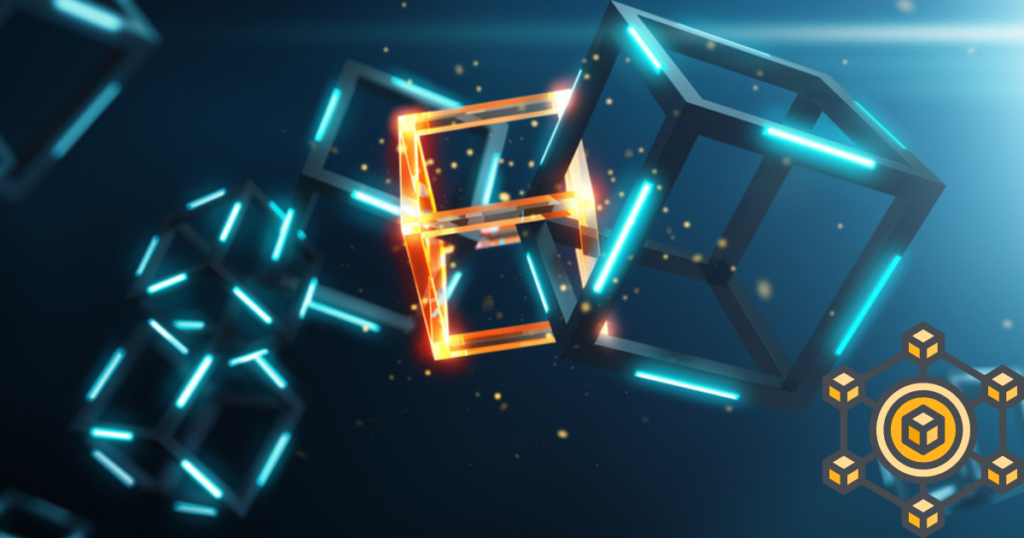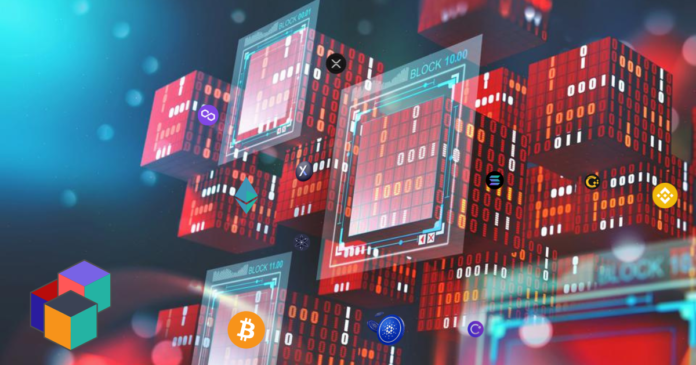How does blockchain works? Would it blow your mind if there was a technological improvement that was massive it could utterly restructure the very bedrocks of our world?
An advancement that alters and improves the societal systems, our knowledge of trading, our systems of governance, security, and the way we see the world business functions and ownerships well that tech is already up and running and we call it cryptocurrency. We are going to talk about blockchain what does it its use cases and why it is important.
A blockchain can just simply be seen as a huge database where you store data. These data are stored or secured on a block and when that block is filled it moves on to a new block to start saving new data all over again. now, these blocks that contain these data are connected to each other by a chain. so at the end of the day, we have a long list of blocks all containing data chained together hence the name blockchain.
What is Blockchain?
The differences between this database and any other database you might have come across are, that the data saved in this database on the blockchain cannot be altered or changed once it gets into the database. This means no one can defraud or deceive the system as old data cannot be edited.
Read: What Is Blockchain and Why blockchain was created?

How does blockchain works? Example
For example, if john made the transaction of three bitcoin to his friend in London out of the six that he has, that transaction is going to be recorded on a block and that block is going to eat that john has three bitcoin left from the six he once had. So no matter what happens john’s record is going to state that his balance is 3 and it will keep being 3 until it is updated with new data. Say maybe when someone sends john’s on bitcoin or he buys from an exchange which is still someone sending to him.
Blockchain is decentralized
This means that the government cannot determine how the whole system is run. How does blockchain works? No singular authority exists to control when what and how transactions are done here. For example, if john has enough money he can decide to buy as much bitcoin as he chooses say 1,000 bitcoin, no agency is going to stop him and say hey john your account has been frozen. You need to follow us to the crypto police station to explain how you got that much bitcoin. It doesn’t work like that with cryptocurrency if it’s in your wallet then it’s yours no one can take it from you.
Blockchain is transparent
Now a blockchain is a public ledger or a big digital book that has the records of all transactions done on the Blockchain network. This digital book the blockchain that stores all these data need the help of lots of computers to achieve this, but unlike regular databases where the servers are stored in one location, these computers are scattered all over the world and these computers are controlled by different but distinctive people or a group of people at those different locations. Now, these points where these computers are located and operated are referred to as nodes.
Related: What Is The Blockchain Trilemma?

Nodes
Every single one of these nodes has the same exact copy of all the data in the blockchain. Making it impossible for anything to be altered without everyone else noticing it. So if there is an error maybe in one of the nodes easy corrections can be made using the other numerous nodes as a guide to update its data. This is what brings about the transparency in the blockchain as all the transactions can easily be tracked and seen by anyone at any time if they wanted to.
This also makes hacks totally difficult as they need to first alter the data at all nodes before they can get anything done, and since these nodes are located at different points scattered all over the world it tends to be an impossible journey.
Read: Permissioned vs Permissionless Blockchain Networks
Blockchain is fast
Transactions carried out on a blockchain are usually faster than normal bank transactions. It can take anywhere from 10 minutes to an hour or days for a transaction in a bank, but on the blockchain depending on how busy the network is, some transactions can be completed in a matter of seconds to a few minutes. This is because blockchain allows people to transact directly with one another without any middleman or third party. All these features of the blockchain make it secure and safe for people to adopt.
Blockchain Use Cases
How does blockchain works? Bitcoin as we all know is a cryptocurrency but one regular mistake people make is that they only see bitcoin as digital money that can be used for payment. It is far more than that, The technology behind bitcoin is so evolved that using it as a mode of payment is one of the few applications of the technology. This blockchain offers lots of other possible uses and I will go over some of them right now.
Related: Top Blockchain Use Cases

Voting
Different countries of their own voting system and none of which is perfect since the data can always be altered by one corrupt person or the other. There is a paper type of voting and this is flawed also and it comes at a cost too because that much paper is not cheap. Electronically voting has also been done but this is also flawed as they are prone to cyber-attacks and hacks. From all the analysis gathered all voting systems have one problem in common and that is the possibility of the data from the election being altered. If there was a system that could check this problem then voting would be smoother and fairer reducing voting hassles by a large percentage.
Blockchain technology can be introduced into the voting system since all the data stored on the blockchain cannot be changed or altered. This will foster transparency of the electoral process as every voter and non-voter can see all the information from anywhere and with certainty too since the data they see cannot be changed.
Car Mileage Tracking
How does blockchain works? How it can be used in car mileage tracking. There were reported cases where the mileage of cars was altered making them look like newer cars and then selling them at a higher price. Now the hack was done to the odometers which measure how many miles a particular engine has been driven to this day. They found a way to clear this out or make it lower, making it look as though these cars have been driven much. Although the government has set up a system to log mileage data for each vehicle by mandatory inspections by the DMV, how many cars can go unchecked and sold without the next owner knowing the actual mileage?
Rather than relying on the inspections and data provided by the DMV a solution with blockchain would be connecting each other meters of each car to the internet so all mileage is recorded every single time the vehicle is driven. By doing so buyers can easily check the information on the cars they want to purchase on the blockchain since the data stored there are immutable. So even if someone wanted to tamper with the odometers of the card they want to sell blockchain will always tell you what the true actual mileage is of that car. This is not far-fetched as companies in Germany are already on this and testing it out on some cars.
Food industry
It’s another great place blockchain can be used, How does blockchain works? I’ll explain how. If implemented properly it can be used to track the shipment of food to all locations on what, where, and when it was delivered. So for example a fruit company ships out 100,000 apples if there’s a recall of only 10,000 apples from one of these shipments the company can easily trace back the bad shipment and pinpoint where they were delivered to and have them discarded immediately, thus the company wouldn’t have to suffer a total loss because they only need to get rid of that particular bad batch and not the entire shipment, because the blockchain identifies each and every transaction to its entirety.

